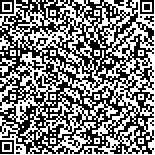| 摘要: |
| 强调公共交通与居民日常需求的结
合的TOD模式作为一种城市知识在从区域到
社区的多个尺度都有应用,已在全球得到了
广泛的实践。本文探讨了TOD模式作为城市
知识从新加坡转移到中国,在浙江省实现在
地化,随后转移到全国部分省市的过程。新
加坡的TOD社区模式作为一种城市知识,最
初被浙江杭州的七彩社区吸收并转化。浙江
省以七彩社区为样板提出了未来社区概念,
并利用政策工具全省范围内推广,形成了
TOD未来社区在浙江省的迭代发展。未来社
区模式作为一种城市知识也传播到中国的四
川、重庆、广东等省市。本文建立城市知识
转移框架,藉此分析TOD模式从新加坡到中
国的传播过程,并探讨影响城市知识转移的
因素。这一转移实践不仅促进了城市知识的
在地化创新,也促进了城市规划发展与城市
的进步。 |
| 关键词: 城市知识 知识转移 TOD模式 未来社区 |
| DOI:10.13791/j.cnki.hsfwest.20240326002 |
| 分类号: |
| 基金项目:国家自然科学基金项目(52278082) |
|
| Evolution of TOD community under the perspective of urban knowledge transfer: FromSingapore to China |
|
QI Weifeng,ZHU Yifei,CAO Kang
|
| Abstract: |
| The TOD(Transit-Oriented Development) model, a concept that focuses on the
harmonious integration of public transportation systems with the daily lives of urban residents, has
gained global recognition as a pivotal urban planning strategy. Its application spans various scales,
from regional level to specific communities, demonstrating its versatility and adaptability. Urban
knowledge is the most important type of knowledge created by human beings. It is the knowledge
about the development and change of cities, and it is also useful information for urban planning
and innovation. Different from the general abstract academic knowledge, urban knowledge is
action-oriented and plays an important role in local policy making and urban development. TOD
model is a typical urban knowledge which is beneficial to urban and rural planning and
development. This article discussed the process of transferring the TOD community model as an
urban knowledge from Singapore, a pioneer in TOD implementation, to China, especially Zhejiang
Province, and eventually to other Chinese provinces and cities, which provided a typical case
study. Singapore’s TOD community model was initially absorbed and transformed by the Seven
Color Community in Hangzhou, Zhejiang Province. Taking the Seven Color Community as a
template, Zhejiang Province had put forward an initiative of Future Community and subsequently
promoted multiple TOD future communities across the province. The Future Community model, as
an urban knowledge, was then exported to other provinces and cities in China, including Sichuan,
Chongqing, and Guangdong. These regions adapted the core principles of TOD in terms of their
unique conditions, resulting in a diverse array of TOD Future Communities that were tailored to
the local needs and aspirations. Based on the literatures on urban knowledge and knowledge
transfer, this article proposed a framework for analyzing the TOD model of urban knowledge
transfer through three elements, namely transfer subject, transfer content, and transfer context. The
arguments are as follows. Firstly, urban knowledge needs to be transferred by subjects, which
mainly include two types of knowledge source and knowledge acceptor that involve different
spatial and administrative scales and can be transformed into each other. Specifically, in the case
of this article, TOD community model transferred across multiple scales such as country, province,
city, and community, and the source and receptor had undergone multiple transformations. In
exporting Singapore’s TOD community model to China and forming the Future Community
model, Singapore was the source of knowledge and China was the recipient of knowledge. In
addition, in formation and diffusing the Future Community model, Zhejiang Province was the
source, and other provinces and cities were the recipients. The Seven Color Community, as a
prototype of Zhejiang’s Future Community model, was a source, while Yangliujun Community,
Nanteng Future Community and other related communities in Hangzhou were the recipient.
Secondly, the degree of knowledge dominance is positively correlated with the transfer of urban
knowledge. In this case, Singapore initially applied the TOD community model originated from
the United States to construct its new towns. Subsequently, Singapore’s new town was used as a
reference by Seven Color Community, which acted as a prototype to form the provincial policy ofZhejiang’s Future Community. After several iterations, Future Community both as a model and an urban knowledge had been promoted in the whole
Zhejiang province and even some other Chinese provinces and cities. In this transnational and transregional process of urban knowledge, the planning
ideas, management methods, and experiences shared were tacit knowledge, and needed for making explicit.Thirdly, two dimensions of cultural difference
and trust relationship were selected in this case. In a cross-cultural context, different individuals, teams, or organizations have different values, behaviors,
communication methods, etc., which will affect the effect of knowledge transfer. Excessive cultural differences will lead to high communication costs and
misunderstandings of information, thus hindering the transfer of knowledge. In addition, trust relationship also plays an important moderating role. If the
knowledge source and recipient trust and respect each other well, the knowledge share and impart would be easy and efficient, avoiding the hiding and
retaining of the knowledge.Three urban knowledge transfer strategies can be derived from these arguments. The first strategy is to establish a deep trust
relationship between the sources and recipients of knowledge transfer and mobilize the enthusiasm of theirs. The second one is to promote the explicit of
tacit knowledge, summarizing and sharing successful experiences. The last one is to make reasonable use of new transfer technologies, as well as develop
multiple transfer forms and media.The transfer practice of urban knowledge studied by this article does not only foster innovation and development in
urban planning but also contributes to the overall progress and well-being of cities and their residents. As urbanization continues to accelerate worldwide,
the exchange and application of urban knowledge will become even more crucial in shaping sustainable and liveable cities of the future. |
| Key words: urban knowledge knowledge transfer TOD mode future community |


